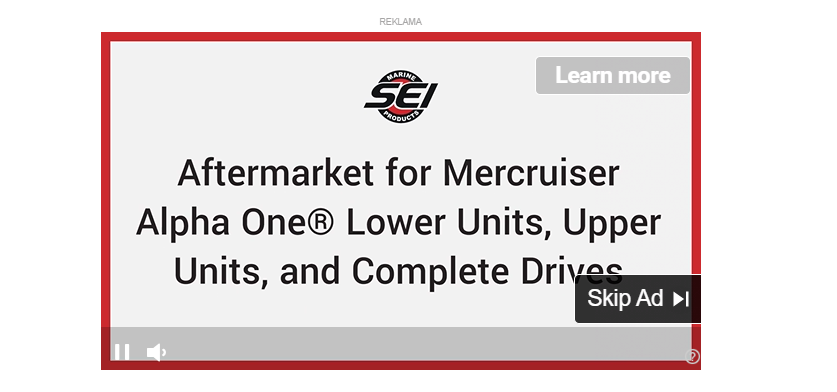
Of course, there are plenty of video ads and ways of displaying them – it doesn’t only happen in content creators’ videos. However, those displayed that way are often more profitable. Broadly, video ads fall into two categories: In stream ads, which are played directly within video content, and Out stream ads, which appear outside of it. But why are In stream ads so much more worth it? And are these reasons strong enough to make them part of your advertising strategy? We have some ad experience, so let us assist you with this task!

What are In-stream ads?
In-stream video ads are ad units that display video ads inside video content. Most often, just as in traditional TV, where ads are shown before, during, or after the show, in-stream ads appear before, midway, or at the end of online videos. Alternatively, they can also appear while the content is playing. What’s more, In stream ads are often displayed on platforms like Facebook and YouTube. In fact, many users associate In stream ads with YouTube videos, as that’s where they most often encounter them. This format captures viewers’ attention when they are already engaged in watching content, making it one of the most effective and profitable ad types for publishers. The twist is that digital publishers don’t need to have video content on their site or app to start monetizing their content with this ad format, for instance, when collaborating with an ad partner like optAd360 – we can provide it for you (but we’ll explain more in the upcoming paragraphs).
Types of In-stream ads
In stream ads don’t all look or behave the same way. To make sense of these particular ad types, it helps to categorize them clearly. There are two main ways to do this, depending on the format and the level of control the viewer has. So here’s the first category of In stream advertising – linear and non-linear:
- Non-linear (or overlay ads) are rich media ads or images displayed while the video content is playing. It allows users to carry on watching and is usually considered by publishers as an additional source of revenue. According to the IAB’s Ad Format Guidelines for Digital Video and CTV (August 2022), they shouldn’t cover more than a fifth of the screen, typically come in sizes such as 300×50 or 450×50, and remain visible for 5-15 seconds. If clicked, they should either expand or lead straight to the advertiser’s page. This ad type often appears in the form of Overlay Banners, which are subtle ads that appear at the bottom or top of the video, allowing it to continue playing;
- Linear ads are designed to make viewers watch them instead of video content, occupying the entire screen space of the video player. Standard lengths are 6,15, or 30 seconds. Interactive ads usually require 15-30 seconds of watch time, but can continue as long as someone engages, whether that’s by clicking or swiping on mobile. Here’s how linear ads are categorized:
- pre roll ads show up before the video starts, so the viewers see them before the main content,
- mid roll ads play partway through the video, giving the brand a chance to reach viewers while they’re highly engaged,
- post roll ads show up right after the video ends, so after users finish watching the content.
Another way to see In stream ads categorization is through the lens of viewer control. In other words, whether the ad can be skipped after a few seconds or if it has to be watched all the way through:
- Skippable ads give viewers the option to click “skip” after a few seconds, allowing them to watch the whole ad only if they’re interested. It’s less pushy than non-skippable ads, which means people don’t get irritated. However, in this case, brands have to make the first few moments count to hook their audience;
- Non-skippable ads ensure that people actually see what the brand wants to show, which is perfect for telling a story or showcasing a product. This gives advertisers more time to tell a story, explain their product, or make a lasting impression. On the other hand, these ads can frustrate viewers who just want to get to the video they came for, especially if the ad is too long.
Out-stream ads
Out stream ads (in-read or native video) are online advertising that is placed within regular non-video content. The name for this type of ad derives from the fact that they aren’t served inside video, as opposed to In stream video ads, which require the main video content. Let’s take a closer look at the types of Out-stream video ads:
- In-article video ads (in-content) are a type of video embedded inside the content, most often between paragraphs of text. They autoplay when in view and pause when out of it. Their subtype is a Sticky video ad:
- Sticky (Floating) ad is a variation of the ad type mentioned above. The video starts playing when embedded in the article, and when the viewer scrolls away, it shrinks and “sticks” to a corner of the screen;
- In-banner video ads display engaging content to viewers. They are usually fixed in the slot and do not move when the user scrolls;
- Sidebar video ads, as the name suggests, are displayed on the side of a web page. They can be sticky;
- Interstitial ads are full-screen advertisements commonly used in mobile apps. It’s advised to show them to a user during natural breaks in an app flow, for instance, when the game level is loading.
Companion ads, an alternative path
While not technically video ads, companion ads can appear simultaneously with video or audio ads, so publishers should be aware of them. The primary purpose of companion ads is to capture more attention, provide additional information, or even persuade a user to take action.
In-stream ads vs Out-stream ads
As mentioned earlier, there are generally two main types of video ads: In stream and Out stream. In stream ads play within existing video content, and usually are shown before, during, or after the main video, commonly known as pre roll, mid roll, or post roll placements. Out stream ads, on the other hand, appear outside of video content. We recommend reading our full article for a more comprehensive understanding of programmatic video advertising and how other videos formats fit into the broader picture.
In-stream video ads examples


Pros and cons of In-stream video ads
Advantages of In-stream video ads:
- In stream ads often come with a higher CPM (Cost Per Mille) than Out stream video ads. Since these ads play directly inside the video content viewers are watching, they grab attention and deliver strong results for advertisers, which means publishers can earn more ad revenue;
- This ad type is a powerful choice because it appears inside the videos people are already watching, are about to watch, or have just finished watching. That means viewers actually notice them, giving brands a great chance to tell a story, showcase a product, or make a strong impression;
- Without their own video, publishers usually miss out on In-stream ads and are left with Out stream ads, which generate less revenue. Although it sounds like an obstacle, optAd360 can actually remove it – we can provide pre-prepared video content (along with a free video player) for those publishers that don’t own their own video content. Thanks to that, you gain access to the higher CPMs that come with them! Of course, for those that actually do have video content, we offer pre roll, mid roll, and post roll video options.
Disadvantages of In-stream video ads:
- The very things that make In stream ads powerful, like their placement inside the video and their high efficiency, can also be sometimes seen as drawbacks. They guarantee attention and strong results for advertisers, but at the same time, they interrupt the viewing experience for users (which some of them might find irritating);
- The fact that many In stream ads are non-skippable can definitely be annoying to some users. People generally prefer to get to the content they came for as quickly as possible, and when they’re forced to watch an entire ad without the option to skip, it can create frustration.
Pros and cons of Out-stream video ads
Advantages of Out-stream video ads:
- To start with, Out stream video ads are another way to earn money from video ads. They usually start without sound and can be skipped. It minimizes disruption and helps keep this format user-friendly;
- What’s more, they offer a lot of placement freedom, meaning that they can be implemented in different spots, like sidebars or inside articles;
- Out stream video ads let publishers earn even without video content, making it their main advantage.
Disadvantages of Out-stream video ads:
- Out stream video ads might tend to dominate the screen. Due to this fact, they are sometimes perceived as intrusive. Supporters of these ads may see them as “eye-catching”, effectively drawing attention to the content. Opponents, however, may view them as annoying, especially when they appear suddenly or take up a large part of the screen;
- Just like with any other ad format, proper implementation is important, but Out stream ads require particular caution because, unlike static formats, video ads are dynamic and grab the user’s attention more strongly. This means that any mistake, launching too early, failing to mute, placing them in the wrong spot within the content, or showing them too frequently, can quickly lead to user frustration;
- Most importantly, Out stream ads usually produce less revenue than In stream ads. That’s why at optAd360 we focus on In stream ads, no matter if you have your own video content or not.
We’ve got what you need!
We are a company that helps publishers monetize their digital content, and with us, you can also do that using In-stream video ads! As we’ve seen above, In stream video ads let advertisers reach their target audience with precision, delivering the core message when viewers are highly engaged, while you get high ad revenue. To benefit from our solutions, all you need to do is get familiar with our requirements and fill out the registration form!

